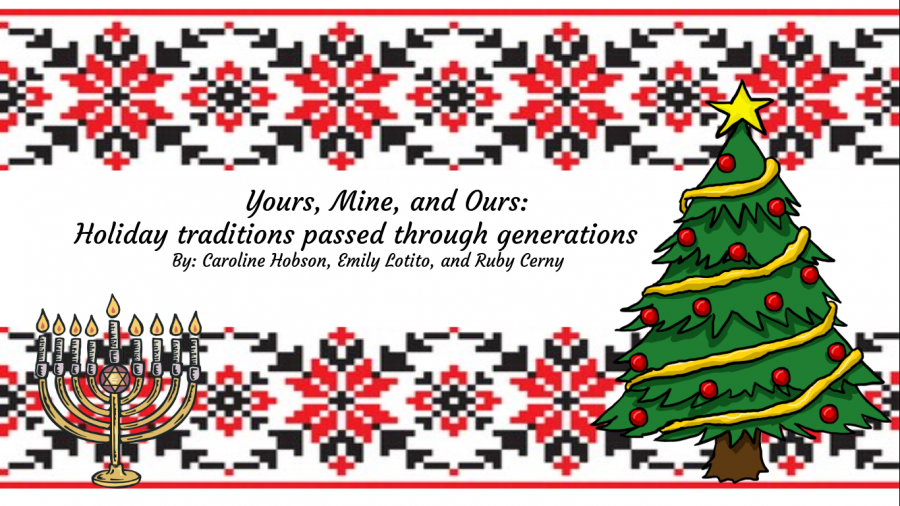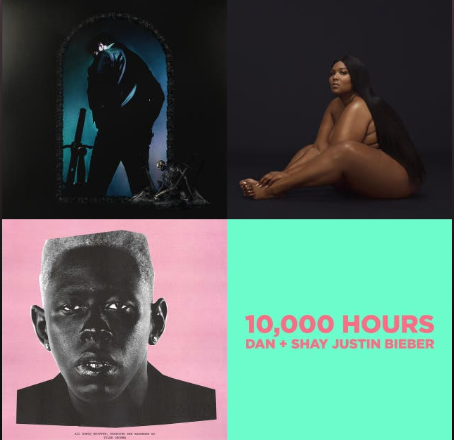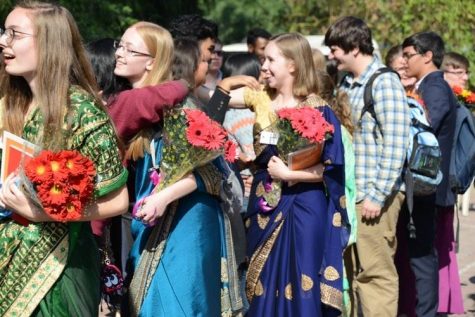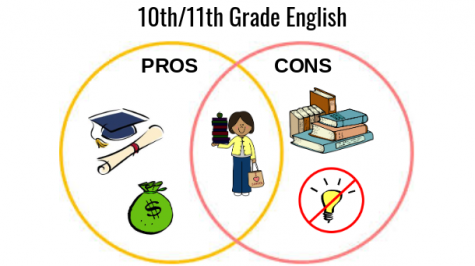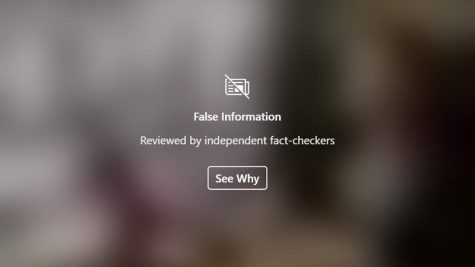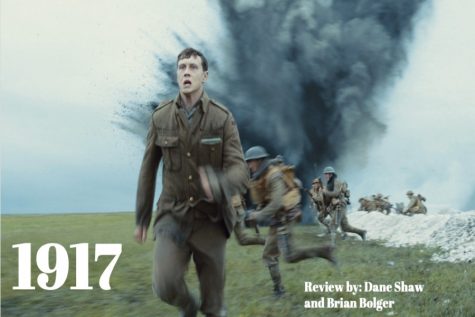Yours, Mine and Ours: Holiday traditions passed through generations
December 17, 2019
When most people imagine a classic winter holiday, they see nativity sets, Christmas trees, and carolers. If not that, they see menorahs, driedels, and lakes. Of course, this is not the case for every family. Families constantly break and create new traditions. There is a history behind each family tradition that can easily get covered up with gifts and bows. For the three of us, we find the holidays rooted in the influence of ancestors.
Caroline’s Holiday Traditions
When celebrating Christmas in England, everyone is considered a king. Many wear paper crowns from cracking open their Christmas crackers. They eat a feast fit for an army. From Boxing Day to Father Christmas, England’s Christmas may resemble an All-American Christmas yet there are many underlying differences.
My family has been celebrating an American-British Christmas in England since before I was born. My family has carried this English-Christmas traditions to the U.S. This allows us to celebrate and feel connected to each other, even if we are 3,590 miles apart for Christmas day.
When my family celebrates in England, the gift-giving section of Christmas is less important, but we never forget to cherish loved ones. Family travels from near and far to be together. From Dubai to Cambridge, my family comes together to celebrate one week out of the year.
This long-distance Christmas started when my grandparents met in Yorkshire, England. At the time, my grandfather was serving in the U.S. Navy. He was stationed in England where he eventually met and fell in love with my grandmother. Later, they started a family and raised my mother and aunt as true British ladies. Fifteen years later, my grandfather retired from service in the Navy and moved back to Maryland where he could focus on his family. This transition to the U.S. was especially hard for my grandmother, mother and aunt because they had never experienced anything close to the American life.
“Everything was bigger and better here. We were clueless. I didn’t even know who won the Civil War back in grade school. These were things that we just didn’t see in England and this made the transition difficult from British to American life,” Said Clare Hobson, my mother.
Traditionally, Christmas crackers are small, pull-apart gifts. You turn to a friend or family member and pull until one of you breaks the tube and gets the bigger half. Each Christmas cracker includes a paper crown (so that everyone can be an English king), a poorly written joke, and a small toy. These fun small gifts are meant to entertain and bring people together before dinner. When all the Christmas crackers are done, it’s time to eat.
“When I was a kid, we were the only family who did Christmas crackers as a tradition. I felt unique, in a way, because this was something small that I loved and no one seemed to know about in the states,” said Clare Hobson. Today Christmas crackers have made an appearance in many American homes during the Christmas season and are available for purchase in stores such as Home Goods, and TJMaxx.
Boxing Day, December 26, is another tradition that is only celebrated in England. Dating back to the 1800’s, servants would get off one day of work after Christmas and the rich would box their left overs and give it to the poor. The rich celebrated on Christmas and the poor celebrated the day after with the rich people’s leftovers. Now, Boxing day has become a recognized English holiday that everyone celebrates. People are supposed to partake in random acts of kindness and box their leftovers to donate to the less fortunate. Everyone gets off of work and school to spread kindness.
“The British give and receive much smaller gifts. When I was a kid, we received a hand full of small gifts on Christmas, and then one or two more gifts on Boxing Day. Instead of donating food, we mostly donated our older clothing and household items,” Said Clare.
We still get together in the US to celebrate, even if most of our family is apart. Past generations of my family have made these traditions so special to me that I will continue them on with my Children to teach them about a traditional British Christmas.
Ruby’s holiday traditions
I’ve always known I was Ukrainian. I often visited my grandma in Washington, D.C. as a child. Her house was covered in a certain red and black Ukrainian embroidery called rushnik. From carpets to regular rags, rushik coated almost every aspect of her house. Her accent was thick and I’d often need my father to translate. My Ukrainian heritage is slightly a mystery. My grandparents met after World War II in a relocation camp. They came to America together and eventually had my dad. Because they met after World War II and left Europe, my family members from my dad’s side are most likely still in Europe. My grandfather was Czech and fluent in eight languages. My grandma, being Ukrainian, spoke Ukrainian and some English.
Growing up, my father spoke Ukrainian in his house but everywhere else he spoke English. My father now hardly speaks Ukrainian for he has no reason to. Though my family does not know much about our Ukrainian heritage, it doesn’t stop my family from celebrating Orthodox Christmas.
My father grew up celebrating a christian Christmas as well as an orthodox Christmas, though the christian Christmas was more important to his family. During the small celebration of orthodox Christmas, my father did a variety of things.
Orthodox Christmas has a religious history though my father never grew up particularly religious, therefore my father did not celebrate the particularly religious ideas behind the holiday. Easter was a more important holiday in the Ukrainian-orthodox community.
“I opened small presents from my mom and dad, had a dinner of traditional Ukrainian food with my parents and family friends. We also listened to Ukrainian songs,” said my father. “It’s thirteen days behind the calendar we use. So– you add thirteen days to December 25th and you get when our Christmas is.” This celebration is the day after the Feast of the Nativity, January 7.
In order to honor my father, my mom, my brother, and me light candles with a specific traditional Ukrainian candle holders, and we cook him Ukrainian food; most of the time it’s perogies or verenekies, even though this wasn’t considered the “main dish.”
“Fish was a big thing. One thing that I kind of stayed away from was this ground fish turned into meatballs in unflavored jello. There was this bread they would bake, pampykhy (Пампихи). There would be little crosses on top of the frosting.”
Emily’s holiday traditions
Hanukkah is an eight night celebration to represent the rededication of the Second Temple in Jerusalem, at the time of the Maccabean revolt against the Seleucid Empire during 166 BC. During the rededication of the Second Temple, there was enough oil for a lantern to only burn one day . But described as a miracle by Judah Maccabee(the leader of the revolt), the oil burned for eight whole days. The miracle led to Hanukkah being an eight day celebration and for there to be eight candles to represent the eight nights the Temple Lantern was light. The ninth candle, the shamash, is used to light the other candles.
During the eight days of Hanukkah, Jewish families light the candles of the menorah and read a section of the Torah specifically for the holiday. Kids play with the dreidel and eat latkes.
Growing up, I’ve always enjoyed the nightly ritual of lighting the menorah and played dreidel with other kids. My sister and I would fight over who got to use the shamash to light the candles. Someone would always be holding a party for the first night of Hanukkah, but we also decorated a Christmas tree and strung lights on my house.
My family have always blended Hanukkah and Christmas to honor both faiths of my parents. We light the menorah and say the Hanukkah prayers from the Torah like any other Jewish family. Our colorful Christmas tree shows ornaments from family members and the places we’ve traveled. We also hang a variety of Star of Davids that were decorated when my sister and I were younger.
Having an interfaith family, my mother a Russian and Romanian Jew and my father a Polish and Ukrainian Byzantine Catholic, it’s quite confusing to others. My father was raised Byzantine Catholic and went to church on Sunday with his family. He was baptized and was even an altar server. I don’t think he knew in the future he would be marrying a Jewish girl from the Jersey Shore.
“We went Yours, Mine, and Ours, a course for couples where one partner is Jewish and the other isn’t. We were told by the Rabbi that we should take this course before we get married to decide how our future would be,” My mother said.
My mother was like me now. Her father was Irish Catholic and her mother is Jewish. My mother celebrated both holidays and never went regularly to church or synagogue.
“Your father has more of a religious background than me. I grew up knowing Judaism as a culture not so much as a religion. Your grandmother had the menorah out every year but we didn’t light the candles all the time,” my mother, Shari Lotito said.
Being an interfaith family, my parents had to decide how my sister and I would be raised; Jewish or Byzantine.
“Your father found he didn’t have a deep connection to being Catholic, while I had a deep connection to being Jewish but not as a religion,” she said.
My family has gone to synagogue and has gone to church for Easter. Being the interfaith family we are, we’ll never be welcomed into a church or a synagogue like conservative families are. We like to celebrate the holiday in our own way, and we embrace both religions.


